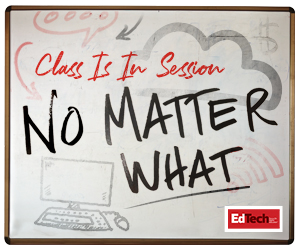1. Humanize the Virtual Learning Experience with Software
In-person learning experiences are critical at Ohio University’s Heritage College of Osteopathic Medicine. This is especially true for courses that cover anatomy and osteopathic manipulative medicine.
In the fall, the college is navigating hybrid learning with help from an investment in a software-based active-learning room technology with multitouch and multiapplication features.
According to one of the school’s instructors, the report notes, this type of visual collaboration software helps “reduce the feeling of physical distancing we’ve been experiencing so far.”
READ MORE: Learn the best practices for engaging students online.
2. Help Lab Students Feel Prepared with AR
Meanwhile, Auburn University is using AR to help connect remote students to physical labs. Its mission is to help students become familiar with the lab, safety procedures, equipment and lab processes despite learning in a virtual environment.
MORE ON EDTECH: See how medical schools are going virtual with VR and AR trainings.
The instructional design team used 360-degree photographs of the physical lab to create a virtual one, where students can click on hotspots to move through the classroom. Each hotspot contains an educational component such as text instructions, a video or an assessment. The hotspots are embedded into the virtual lab on Canvas.
“In the end, students will be able to virtually prepare for their time in the lab, which can now be spent using the equipment instead of requiring additional time to prepare to use the equipment,” the report’s authors write. “This solution can also be expanded to provide full classroom experiences if no in-person time is available.”
3. Create a Sense of Community Through Virtual Social Events
Educators at Harvard Business School Online are well aware that entirely online programs can make networking with peers and mentors difficult. Since networking skills are vital to a student’s future business success, improving the digital networking experience has been a key focus for HBS Online.
In response to this need, Harvard graduates used Congregate to create an online events platform that helps facilitate informal conversations between students in the Harvard Business Analytics Program. The platform simulates a networking experience similar to one that students would typically encounter at an in-person event.
READ MORE: Learn how to plan a virtual graduation celebration like no other.
HBS Online is also using web conferencing applications to host virtual social events such as speed mentoring, coffee breaks and business pitch competitions. These community-building activities have been boosting morale for both students and faculty.
“I’m excited that we can offer this study highlighting just how some of our peers are engaging in those new modes,” says Mark McCormack, senior director of analytics and research at EDUCAUSE and co-author of the study. “I hope it helps light a path forward for institutional leaders struggling to navigate through unprecedented circumstances in an unprecedented year.”











